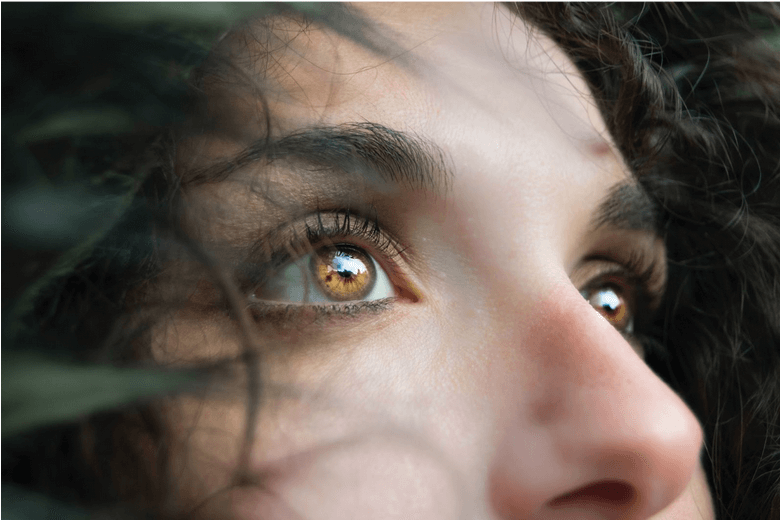
Excellent vision is something that many of us take for granted. However, just as we take steps each day to keep our minds and bodies healthy, there are simple things we can do to ensure our eyesight remains strong throughout life. Here are some best practices that you can pass along to your patients to help them protect their eyes.
Eat a healthy diet and exercise regularly.
According to the American Optometric Association, age-related changes in vision typically begin in the early to mid 40s. Filling your plate with plenty of nutrient-rich foods and living an active lifestyle can go a long way toward preserving healthy vision well into adulthood.
A wide variety of foods—including carrots, sweet potatoes, avocados, almonds, leafy green veggies, beans, and fatty fish—contain vitamins and minerals that have been shown to support healthy vision and protect against diseases that can cause vision loss, such as glaucoma and macular degeneration.
Eating well and exercising on a regular basis (aim for about 30 minutes a day, five days a week) also helps you to maintain a healthy weight, which in turn benefits your eyes by reducing the risk of developing diabetic retinopathy. This debilitating eye condition, associated with diabetes, now affects nearly one-third of all adults in the United States.
Keep track of changes in your children's eyesight.
In our increasingly digital world, kids and teens now spend an average of 7.5 hours each day staring at a screen. The increased screen time, coupled with poor dietary habits and too little physical activity, can start to impact healthy vision at a very young age.
Experts will tell you that the time between birth and age six is a critical period for vision development in children. In addition to limiting their screen time and encouraging a healthy diet and lifestyle, pay close attention to any vision problems or issues your child may be having with their eyesight. Long hours spent staring at a tablet or a television screen may result in eye strain, dry eyes, and possibly even nearsightedness over time.
Likewise, if your child plays sports, make sure they wear proper protective gear to cover their eyes and help prevent injuries.
Be smart about sun protection.
Spring has arrived, which means many of us are spending more time outdoors soaking up the vitamin D. But prolonged exposure to ultraviolet radiation from the sun can cause significant damage to the lens, cornea, and delicate surface tissue of the eyes. When spending time outside this spring and summer, always wear sunglasses to block UV-A and UV-B rays and protect your eyes—even while driving.
And speaking of warm-weather fun, check out these Summer Eye Health Basics to safeguard healthy vision all season long.
Quit smoking (and vaping too).
Regular tobacco use is detrimental to your health for numerous reasons. Along with increasing your risk of cancer, heart disease, and diabetes, smoking cigarettes has been linked to a higher risk of developing cataracts and age-related macular degeneration (AMD)—both of which can lead to vision loss and blindness.
According to the U.S. Food & Drug Administration, "People who smoke cigarettes are two to three times more likely to develop cataracts and up to four times more likely to develop AMD than people who don’t smoke."
Does vaping count? Absolutely. In a 2019 study, participants who vaped regularly experienced increased dry eye symptoms and poor tear film quality when compared with nonsmokers. According to study authors, "High vaping voltage may have aggravated the dry eye syndrome because of hazardous by-products from pyrolysis of the e-liquid constituents."
Additionally, a study conducted in 2021 by experts at the University of California found that the use of e-cigarettes was linked to visual impairment, likely due to the harmful solvents used in vaping fluid.
Visit your eye doctor at least once a year.
According to the Centers for Disease Control and Prevention (CDC), an estimated 93 million adults in the United States are at high risk for serious vision loss, but only half visited an eye doctor in the past 12 months.
While regular eye exams are important to help people see better as their eyesight changes, they are also a critical first step toward detecting serious eye diseases such as cataracts, glaucoma, and diabetic retinopathy. Click here to read more about the importance of regular eye exams.
It is also recommended that patients know their family eye health history. Those with a history of glaucoma—currently one of the leading causes of blindness and low vision in the United States—have a significantly higher risk of developing the disease. For this reason, knowing about their family eye health can be helpful in safeguarding healthy vision.